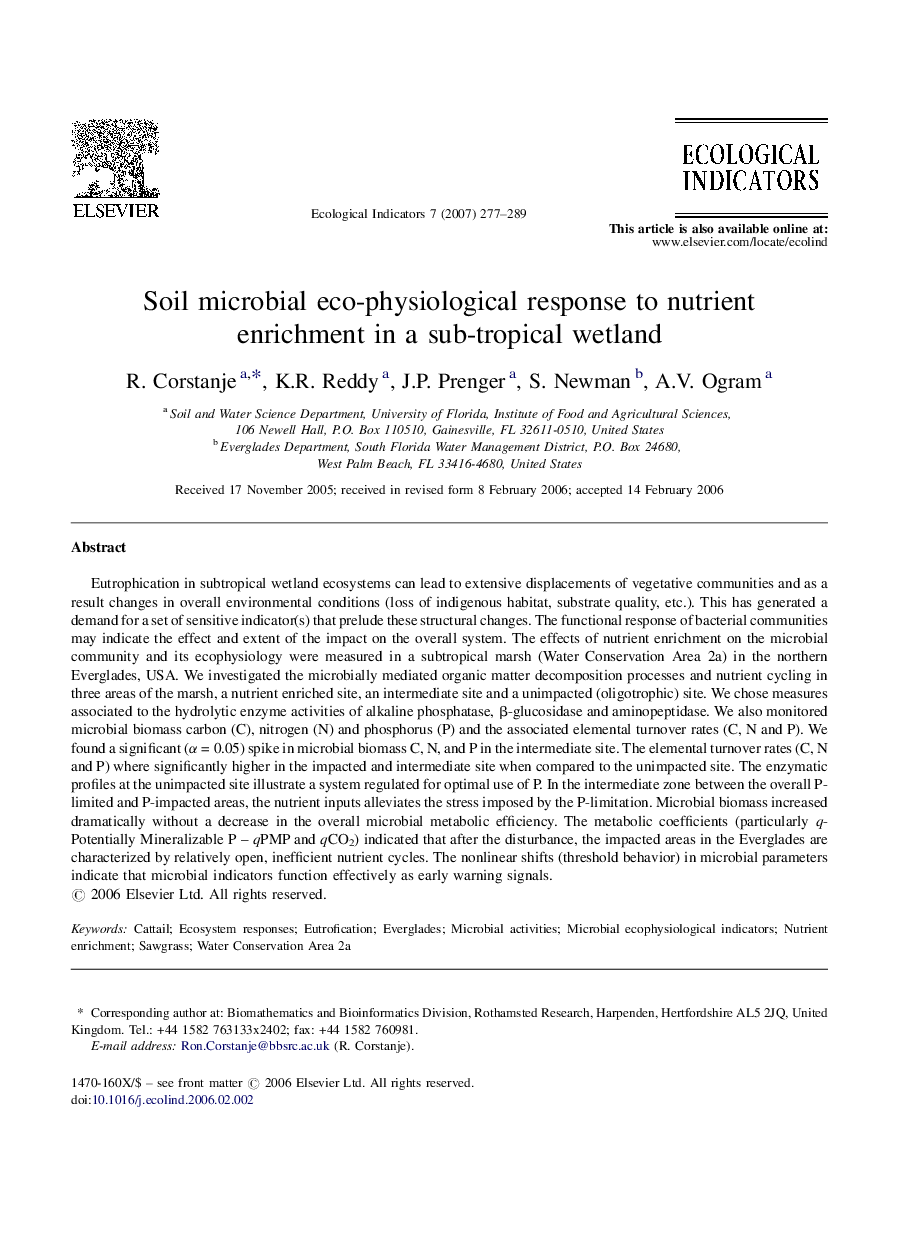| کد مقاله | کد نشریه | سال انتشار | مقاله انگلیسی | نسخه تمام متن |
|---|---|---|---|---|
| 4374487 | 1303176 | 2007 | 13 صفحه PDF | دانلود رایگان |

Eutrophication in subtropical wetland ecosystems can lead to extensive displacements of vegetative communities and as a result changes in overall environmental conditions (loss of indigenous habitat, substrate quality, etc.). This has generated a demand for a set of sensitive indicator(s) that prelude these structural changes. The functional response of bacterial communities may indicate the effect and extent of the impact on the overall system. The effects of nutrient enrichment on the microbial community and its ecophysiology were measured in a subtropical marsh (Water Conservation Area 2a) in the northern Everglades, USA. We investigated the microbially mediated organic matter decomposition processes and nutrient cycling in three areas of the marsh, a nutrient enriched site, an intermediate site and a unimpacted (oligotrophic) site. We chose measures associated to the hydrolytic enzyme activities of alkaline phosphatase, β-glucosidase and aminopeptidase. We also monitored microbial biomass carbon (C), nitrogen (N) and phosphorus (P) and the associated elemental turnover rates (C, N and P). We found a significant (α = 0.05) spike in microbial biomass C, N, and P in the intermediate site. The elemental turnover rates (C, N and P) where significantly higher in the impacted and intermediate site when compared to the unimpacted site. The enzymatic profiles at the unimpacted site illustrate a system regulated for optimal use of P. In the intermediate zone between the overall P-limited and P-impacted areas, the nutrient inputs alleviates the stress imposed by the P-limitation. Microbial biomass increased dramatically without a decrease in the overall microbial metabolic efficiency. The metabolic coefficients (particularly q-Potentially Mineralizable P – qPMP and qCO2) indicated that after the disturbance, the impacted areas in the Everglades are characterized by relatively open, inefficient nutrient cycles. The nonlinear shifts (threshold behavior) in microbial parameters indicate that microbial indicators function effectively as early warning signals.
Journal: Ecological Indicators - Volume 7, Issue 2, April 2007, Pages 277–289